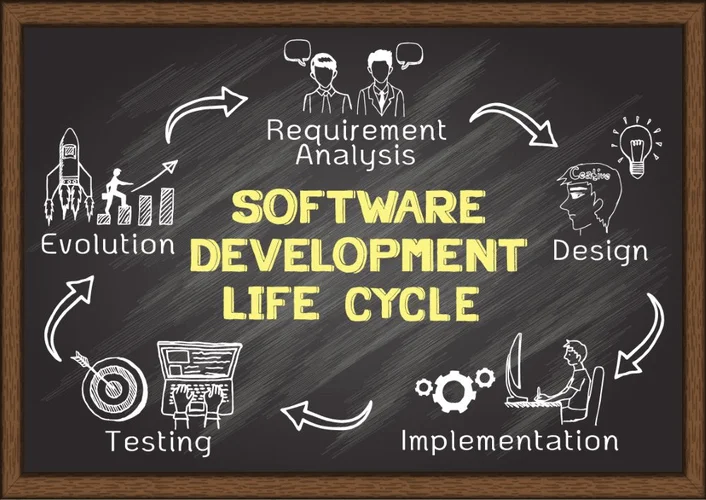The calculations involved to estimate threat factor for a portfolio is about billions. Huge data analytics is not just an optionally available software for the modern trader; it’s an indispensable asset that empowers algorithms to execute smarter, faster, and extra worthwhile trades. As the monetary world turns into increasingly complicated, the role of big data analytics in algorithmic buying and selling will solely grow more significant, shaping the way forward for the markets in ways we are just beginning to know. For the merchants themselves, huge data analytics is the compass that guides their algorithmic trading vessels via the tumultuous seas of the inventory trade. By analyzing social media sentiment, financial indicators, and even climate patterns, merchants can regulate their algorithms to capitalize on the ebb and flow of market sentiment. “Big data” algorithmic trading is the method of making trading strategies based mostly on large units of knowledge.
A buying and selling system would not predict value actions; as an alternative, it reacts to cost changes primarily based on predefined guidelines and techniques. Every move in trading includes a call, whether or not to buy, sell, hold or keep out of the market. Big Data has supplied the possibility for traders to make these critical selections extra thoughtfully. The ocean of real-time info from various sources may be analyzed and visualized in a way that makes it easier to know the hidden patterns and correlations.
Intuitively, we anticipate higher bid depth to indicate greater purchase demand and, hence, larger costs. Inarguably, one of the more alarming concerns with huge knowledge in buying and selling is expounded to data privateness and safety. As buying and selling ventures increasingly adopt huge information, so too grows the necessity for strong safety measures.
The effectiveness of decision-making processes in buying and selling largely is dependent upon the accuracy, consistency, and reliability of the information being analyzed. Mere quantity does not suffice; the info must contain useful, correct, and reliable info to be worthy of research. The term ‘Huge Knowledge’ often refers to datasets which are so massive and complicated, they challenge the power of conventional knowledge processing purposes to deal with them.

Massive information enhances velocity and accuracy, allowing traders to capitalize on tiny worth fluctuations. Right Now, it is a common follow to incorporate blockchain know-how in algorithmic trading systems. The essence of blockchain expertise is about on executing trades via sensible contracts, an odd however secure Smart contract method.

The most necessary thing to remember is that “big data” doesn’t at all times imply “more information. This paper goals to supply a comprehensive overview of Massive Knowledge’s symbiotic relationship with algorithmic buying and selling. Infrastructure additionally needs to scale successfully to handle vast amounts of knowledge without sacrificing pace or accuracy. Preprocessing steps—like cleaning, normalizing, and standardizing data—are important to avoid deceptive signals. Additionally, compliance with regulations and sturdy data security measures are important. Constructing a stable knowledge management framework is now a key think about staying aggressive.
These fashions are then examined and refined, usually via machine studying methods, to enhance their predictive energy. Threat management and compliance in algorithmic trading are multifaceted challenges that require a proactive and comprehensive approach. Machine studying (ML) and artificial intelligence (AI) have taken a center position in algorithmic trading these days. Such algorithms use historical information to pick up patterns and refine their strategies with time and increase the likelihood of accurate forecasting of market fluctuations. Of the common techniques inside https://www.xcritical.in/ ML-based buying and selling techniques, these embrace supervised learning, unsupervised learning, and reinforcement studying.
In machine studying, overfitting occurs when a mannequin is simply too intently tailored to historical knowledge and performs poorly on new, unseen data. Guaranteeing that predictive models generalize well to new data is crucial for dependable buying and selling performance. Massive information ensures accuracy by providing numerous and updated information. In current years, huge knowledge has become more and more essential in finance. Algorithmic trading, which makes use of pc programs to make buying and selling choices, is one area the place big knowledge has played a major function.Huge data can be utilized in algorithmic buying and selling in several ways.
What Are The Disadvantages Of Algorithmic Trading Systems?
Blockchain expertise is more and more getting used to fulfill these authorized necessities. It presents safe trade settlements, transparent audit trails, and lowered Big Data in Trading counterparty risks. The threat of loss in online buying and selling of shares, options, futures, forex, overseas equities, and glued income may be substantial. Earlier Than trading, clients must read the relevant risk disclosure statements on IBKR’s Warnings and Disclosures page.
Testing Buying And Selling Systems
The commonplace deviation of a stock’s recent costs signifies whether to purchase or sell. On the other hand, when the current market worth is higher than the common value, traders don’t need to buy the inventory as a result of they assume the worth will fall back to the common price. The “rebalancing” permits algorithmic traders to earn cash on anticipated trades based mostly on the variety of stores in the index fund. Regardless of your technique, it’s important to do not forget that big knowledge is simply as priceless as your capability to grasp and use it well.
- Underneath the foundations of the mathematical models, algorithmic buying and selling allows offers to be made at the best costs and at the proper time.
- From the angle of a financial analyst, algorithmic buying and selling is a game-changer.
- Statistical arbitrage methods rely on statistical measures, just like the correlation coefficient or cointegration, to forecast when the prices of those belongings will converge or diverge.
Simply to get a hundred intra-day situations for purchasing or selling an instrument, there has to about 1,000,000 calculations. It needs to be carried out so fast that commerce actions ought to be generated in close to real-time. Algorithmic buying and selling is essentially this step wherein within a short while period the algo buying and selling firms consider and generate the trade action. Think About the instance of a mean reversion strategy, where an algorithm identifies belongings which have deviated significantly from their historic common value and are prone to revert to that mean. By systematically figuring out and capitalizing on these deviations, merchants can generate constant returns whereas mitigating danger.
The strategic adoption of algorithmic buying and selling is not merely a pattern but a necessity for those looking for to thrive within the trendy financial ecosystem. By leveraging the power of algorithms, traders can improve their decision-making processes, optimize their execution methods, and finally, safe a formidable position within the competitive world of trading. As the financial trade continues to evolve, those that embrace the capabilities of algorithmic buying and selling might be well-equipped to navigate the complexities of the large information era. High-frequency trading (HFT) companies use this know-how to execute trades within milliseconds, maximizing income. With real-time processing of knowledge, algorithms can react almost immediately to new knowledge in order that costs are always up to date and adjusted to present market conditions. This real-time value discovery reduces alternatives for arbitrage and permits for more environment friendly overall markets.
Advancing Financial Forecasting In Algorithmic Buying And Selling Utilizing Machine Learning Methods
Massive information is reshaping algorithmic trading by improving market evaluation and enabling sooner decision-making. Current tendencies highlight the growing influence of these applied sciences. This materials is from Databento and is being posted with its permission.


